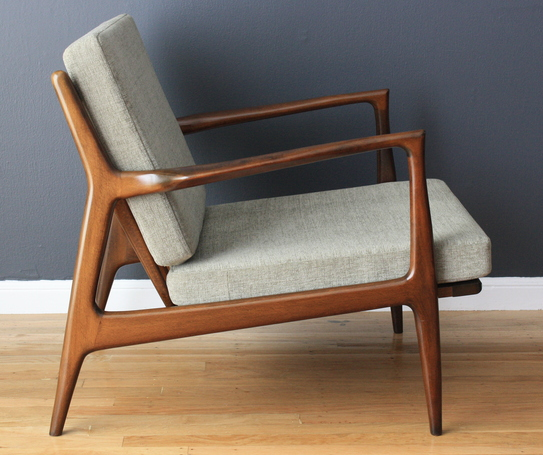DANISH MODERN
Between the two world wars, Karee Kline exerted a strong influence on Danish furniture making. Appointed head of the Furniture Department at the Architecture School of the Royal Danish Academy of Fine Arts, he encouraged his students to take an analytical approach, adapting design to modern-day needs. Adopting the Functionalist trend of abandoning ornamentation in favor of form, he nonetheless maintained the warmth and beauty inherent in traditional Danish cabinet making, as well as high-quality craftsmanship and materials.
In the postwar years, Danish designers and architects believed that design could be used to improve people's lives. Particular attention was given to creating affordable furniture and household objects that were both functional and elegant. Fruitful cooperation ensued, combining Danish craftsmanship with innovative design. Initially, the furniture was handmade, but recognizing that their work would sell better if prices were reduced, the designers soon turned to factory production. Interest in Danish Modern in the United States began when Edgar Kaufmann, Jr. from the Museum of Modern Art purchased some items for the Falling water home designed by Frank Lloyd Wright. This ultimately led to mass-production in the United States, too.

The scarcity of materials after the Second World War encouraged the use of plywood. In the late 1940s, the development of new techniques led to the mass production of bent plywood designs by Hans Wegner and Borges Morgenstern, both of whom produced chairs with a teak plywood seat and back on a beech frame. In 1951, Arne Jacobsen went even further with his sculptural Ant Chair with a one-piece plywood seat and back, bent in both directions. Collapsible chairs dating from the 1930s include Karee Lint’s Safari Chair and propeller stools which were also developed by Pouf Kjærholm and Jorgen Gammelgaard.
Finn Jull’s home in Charlotte Lund, just north of Copenhagen, has been preserved as he left it with the furniture he designed. Other major contributors to Danish Modern include Mogen Koch, Varner Panton, Jon Luzon, Hans J. Wegner and Grete Jack. Examples of their work can be seen at Design museum Dan mark in Copenhagen. Of particular note are Morgenstern’s Sleigh Chair, Jacobsen's Swan and Jull’s sculptural wood-frame seats. One of Wegner's works was used by Nixon and Kennedy in a 1960 televised debate and is now known simply as The Chair.
As a result of the furniture school he founded at the Royal Academy in 1924, Klimt had a strong influence on Danish furniture, shaping designers such as Kjærholm and Morgenstern. His carefully researched designs are based on functionality, proportions in line with the human body, craftsmanship and the use of high quality materials. Notable examples of his work include the Propeller Stool (1927), the Safari Chair and the Deck Chair (both 1933), and the Church Chair (1936).

Graduating from the Royal Academy in 1924, Jacobsen quickly demonstrated his mastery of both architecture and furniture design. With the completion of his Royal Hotel in Copenhagen and all its internal fittings and furniture in 1960, his talents became widely recognized, especially as a result of the chairs called the Egg and the Swan, now international icons. His stackable, three-legged Ant Chair (1952) with a one-piece plywood seat and back and its four-legged counterpart, the 7 Chair (1955), were particularly popular with worldwide sales in the millions.
Inspired by Karee Kline under whom he had studied, Wincher later followed in his footsteps as professor of the Royal Academy's furniture school. Particularly interested in 18th-century English furniture and in early Egyptian furniture, one of his most successful pieces were his delicately designed Egyptian Stool (1960) crafted from luxurious materials.

Comments
Post a Comment